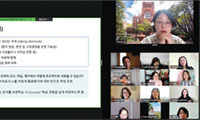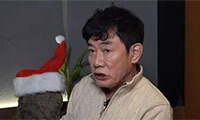▶ The Folly and Worry Of Trigger Diplomacy
▶ Assassination only happens cleanly in Hollywood films.
THE MOVIES MAKE it look so easy: the sniper’s crosshairs on a terrorist’s forehead; the plastic explosive taped beneath a foreign spy’s car; the lethal potion slipped into a dictator’s morning coffee.
So perhaps the biggest surprise about the Central Intelligence Agency’s furor du jour - the secret program, hidden from Congress, to kill the leaders of Al Qaeda - is not that there was such a program, which many Americans assumed.
Nor is it that former Vice President Dick Cheney instructed the C.I.A. to keep the program from Congress. Mr. Cheney has never been accused of reckless openness about intelligence programs.
The real surprise is that in eight years of offagain, on-again brainstorming, planning and training, the program did not kill a single terrorist. It did not even mount an attempt, C.I.A. officials say.
Killing a specific terrorist in a faraway country, using the up-close-and-personal methods that the secret program was created to explore, turns out to be considerably more complicated than the cinematic fantasy.
Dropping missiles from unmanned aircraft has proven logistically and politically so much simpler that the alternatives have never been tried, intelligence officers say. Al Qaeda has obliged by hiding out not in cities but in the rugged mountains of Pakistan, where missile attacks are feasible.
Hence President Obama has not only continued the drone strikes begun under President George W. Bush, but even stepped them up. Despite the collateral killings of terrorist suspects’ families and neighbors, and the political backlash such missile strikes produce, the drones keep American intelligence officers thousands of kilometers from the deaths, which clearly has made this approach attractive to both administrations.
Few operations are riskier than a targeted killing, but the idea of eliminating a very bad guy has an alluring simplicity.
Yet the reasons the C.I.A. might have hesitated.
before dispatching a team of killers are easily imagined by anyone who has followed the gyrations of the agency’s history. In recent decades, the C.I.A. has been pressured often by a president to take risky actions, only to face investigations and condemnation when the actions are exposed.
The C.I.A.’s biggest worries as it contemplated ordering an attack on a terrorist overseas may not have been about the law, said William C. Banks, a law professor at Syracuse University in New York State who has studied targeted killings.
At least by American government calculations, the killing of a Qaeda member is an act of war, not assassination. The ban on assassination, in effect since President Gerald Ford’s executive order of 1976, would apply only to “politically inspired killings of people who are not combatants,” Mr. Banks said. To be a lawful target, a terrorist must be “engaged in armed combat with the United States,” he said. “Bin Laden is the poster child, and you work your way down the Al Qaeda ladder from there.”
Killing such a target would arguably be permissible, Mr. Banks said, if he were in hostile territory where capture was infeasible. But if the target were in Paris, the law of war obligates the United States to work with French authorities to seize the suspect.
The logistical difficulty and political risk of picking off a terrorist away from a war zone are daunting.
When the C.I.A. seized a radical Muslim cleric in Milan in 2003 and flew him to Egypt, Italian authorities tracked the whole operation through cellphone calls and hotel receipts, leading to a criminal trial for 26 Americans in absentia that is still going on. Another rendition team picked up a Lebanese-born German citizen in Macedonia and took him to Afghanistan - setting off an international fiasco for the United States when it turned out the C.I.A. had grabbed the wrong Khalid el- Masri.
Such a record of tradecraft would not exactly encourage C.I.A. bosses to give the “go” order to a killing team. And in any case, anyone familiar with the agency’s history would already have ample reason for caution.
Assassination is a word that still haunts the C.I.A. The most lurid of the volumes produced by the Senate committee headed by Frank Church of Idaho in the mid-1970s detailed the C.I.A.’s plots to kill foreign political figures, including Cuba’s Fidel Castro and the Congo’s Patrice Lumumba. Such intrigues were overseen by the agency’s Health Alteration Committee.
But those schemes were as ineffective as they were scandalous. Mr. Castro, now 82, has outlived most of those who plotted to kill him. Mr. Lumumba was killed by a rival Congolese group after a would-be C.I.A. assassin balked. “People forget this now, but when the Church report came out there was a lot of mockery of the C.I.A. as the gang that couldn’t shoot straight,” said Loch K. Johnson, a former Church committee staff member.
Targeted killings are “very difficult to pull off, and it’s politically toxic if you’re caught,” said Geneve Mantri, who tracks counterterrorism programs at Amnesty International. “This Jason Bourne stuff is great for the movies, but the history is that these cases often end up as a mess.”
스마터리빙
more [ 건강]
[ 건강]이제 혈관 건강도 챙기자!
[현대해운]우리 눈에 보이지 않기 때문에 혈관 건강을 챙기는 것은 결코 쉽지 않은데요. 여러분은 혈관 건강을 유지하기 위해 어떤 노력을 하시나요?
 [ 건강]
[ 건강]내 몸이 건강해지는 과일궁합
 [ 라이프]
[ 라이프]벌레야 물럿거라! 천연 해충제 만들기
 [ 건강]
[ 건강]혈압 낮추는데 좋은 식품
[현대해운]혈관 건강은 주로 노화가 진행되면서 지켜야 할 문제라고 인식되어 왔습니다. 최근 생활 패턴과 식생활의 변화로 혈관의 노화 진행이 빨라지고
사람·사람들
more많이 본 기사
- “이재명 부친 야반도주” 주장한 전직… 1
- 내란특검, 尹 첫 구형…체포방해 등 … 1
- 65세 이경규, 녹화 도중 병원行.. “심장 막혀 스텐트 시술”
- 샌프란시스코 정전에 먹통됐던 웨이모, 이번엔 홍수경보에 운행중단
- ‘김건희 수사무마 의혹’ 이창수 前지검장, 특검 소환 재차 불응
- 푸틴, 우크라 종전안 검토 착수… “거부 가능성 상당하다” 관측
- 박나래, 과거 또 파묘..이번엔 ‘나혼산’ 18L 식용유 장면
- [2026전망] ‘집권 2년차’ 트럼프발 세계질서 재편 계속된다
- “美 J1비자 ‘현대판 노예’ 사례 속출”…韓대학생 “정화조 청소만”
- 美, 성탄절에 나이지리아內 IS 공습… “IS 테러리스트 대상”
- 성탄절 캘리포니아 이틀째 악천후…최소 2명 사망
- 트럼프 얹은 케네디센터 개명 싫어 연례 성탄콘서트 취소
- 중앙정치 실망한 공화 하원의원들 내년 주지사 선거 출마 러시
- “여객기서 빈대 물렸다” 美·유럽 항공사 상대 억대 손배소
- MC몽, 차가원과 불륜설에 분노 “차 어르신 장난질, 싹 다 고소”
- 여성 살해·자녀 납치 한인 ‘수배’
- 잘나가던 백종원, 논란에 흔들.. ‘흑백요리사2’ 복귀로 웃을까?
- 김정은, 올해는 대화 나오나…트럼프와 재회여부 주목
- 네타냐후, 하마스 기습 안보실패 ‘셀프조사’ 추진 논란
- 맘다니 뉴욕시장 취임위원회에 ‘파친코’ 이민진 작가
- 트럼프, 성탄절 어린이들과 통화… “나쁜 산타 막을게”
- “마가, 유럽에 첫 공격”…표현의 자유 둘러싼 전쟁 시작됐나
- 선우용여 “아들, 돈 없어 개밥 먹기도..아파트 마련해줬다”
- 원·달러 환율, 당국 개입에 42원 폭락
- “소변 불편한데 주저하다 방광 망가져”
- 尹 내란재판 첫 구형 나온다…오늘 체포방해 혐의 결심공판
- “베네수 마두로, 美 군사위협을 반체제 인사 탄압에 활용”
- BTS·블랙핑크 컴백에 부산 세계유산委…K-컬처 달린다
- 최준희, 엄마 故최진실 생일 맞아 추억 “우리 마미 축하”
- 북한인, 아마존 위장취업 대거 적발
- 테슬라, “비상사태 시 차문 안 열려”
- 피클볼이 바꾸는 부동산의 얼굴
- 올해도 우울한 우크라 성탄…러 공격 지속에 종전 기대감도 저조
- 한인 박찬영씨 총격살해범은 백인 군인...살해범 “박씨 차량이 끼어들어 시비가 붙어 결국 총쐈다”
- 쿠팡 유출 한달 만에 용의자 특정…동기·2차피해는 여전히 베일
- 바야흐로 ‘귀금속 시대’… 금·은·구리까지 사상 최고
- 새해 더 건강해지기 위한 의사의 과학적 조언 10가지
- H-1B ‘10만 달러 수수료’ 연방법원, 이의소송 기각
- 한인타운 한복판 주유소서 강도 ‘칼부림’
- VA 페어팩스 카운티 실업자 급증
- 중산층이 집을 사지 않는다?… 챗GPT가 내다본 주택시장 미래
- 남가주 전역에 ‘물폭탄’… 성탄 연휴 ‘대혼란’
- 2026년, 격동의 스포츠 캘린더…올림픽·월드컵·아시안게임 다 열린다
- 이스라엘군 “레바논서 이란 정예부대 군인 사살”
- [유혜미 칼럼] 치솟는 환율, 경제 지표의 역설
- 쿡, 나이키 주식 매입 2005년부터 사외이사
- 팔레스타인서 구금된 한인 여성 무사 귀환
- [성탄절 앞둔 우울한 경제상황] 연말 선물로 중고품 급증
- 오헌, 샌디에고 떠나 피츠버그와 입단 합의… 송성문에겐 기회
- 시택공항서 “내 이름이 뭔가요” 캠페인...가짜 차량공유 범죄 예방 위해 캠페인 시행키로
1/5지식톡

-
 미 육군 사관학교 West Poin…
0
미 육군 사관학교 West Poin…
0https://youtu.be/SxD8cEhNV6Q연락처:wpkapca@gmail.comJohn Choi: 714-716-6414West Point 합격증을 받으셨나요?미 육군사관학교 West Point 학부모 모…
-
 ☝️해외에서도 가능한 한국어 선생님…
0
☝️해외에서도 가능한 한국어 선생님…
0이 영상 하나면 충분합니다!♥️상담신청문의♥️☝️ 문의 폭주로 '선착순 상담'만 진행합니다.☎️ : 02-6213-9094✨카카오톡ID : @GOODEDU77 (@골뱅이 꼭 붙여주셔야합니다…
-
 테슬라 자동차 시트커버 장착
0
테슬라 자동차 시트커버 장착
0테슬라 시트커버, 사놓고 아직 못 씌우셨죠?장착이 생각보다 쉽지 않습니다.20년 경력 전문가에게 맡기세요 — 깔끔하고 딱 맞게 장착해드립니다!장착비용:앞좌석: $40뒷좌석: $60앞·뒷좌석 …
-
 식당용 부탄가스
0
식당용 부탄가스
0식당용 부탄가스 홀세일 합니다 로스앤젤레스 다운타운 픽업 가능 안녕 하세요?강아지 & 고양이 모든 애완동물 / 반려동물 식품 & 모든 애완동물/반려동물 관련 제품들 전문적으로 홀세일/취급하는 회사 입니다 100% …
-
 ACSL 국제 컴퓨터 과학 대회, …
0
ACSL 국제 컴퓨터 과학 대회, …
0웹사이트 : www.eduspot.co.kr 카카오톡 상담하기 : https://pf.kakao.com/_BEQWxb블로그 : https://blog.naver.com/eduspotmain안녕하세요, 에듀스팟입니다…
케이타운 1번가
오피니언
 스티브 강 전 한인민주당협회 회장
스티브 강 전 한인민주당협회 회장 [스티브 강 ‘인사이드 미국’] 2026 중간선거: 트럼프 지지율 하락이 말해주는 것
 김홍일 케이유니콘인베스트먼트 대표
김홍일 케이유니콘인베스트먼트 대표 [기고] 안정의 기준은 어떻게 제도가 되었나
 유혜미 한양대 경제금융대학 교수
유혜미 한양대 경제금융대학 교수 [유혜미 칼럼] 치솟는 환율, 경제 지표의 역설
 성민희 소설·수필가
성민희 소설·수필가 [윌셔에서] 우리 안의 ‘생각하는 사람’을 깨울 시간
 김정곤 / 서울경제 논설위원
김정곤 / 서울경제 논설위원 [만화경] 해수부 부산시대

[왈가 왈부] 내란재판부·정통망법 또 수정… 졸속·땜질 아닌가요
 정숙희 논설위원
정숙희 논설위원온라인쇼핑과 반품, 그리고 그 이후
 파리드 자카리아 / 워싱턴포스트 칼럼니스트 / CNN ‘GPS’ 호스트
파리드 자카리아 / 워싱턴포스트 칼럼니스트 / CNN ‘GPS’ 호스트 트럼프의 새 독트린 “미국을 다시 왜소하게”
 김동찬 시민참여센터 대표
김동찬 시민참여센터 대표 [미국은 지금] MAGA의 분열, 예견된 균열의 시작
1/3지사별 뉴스

“온 세상에 평화를⋯”
숨가쁘게 달려온 2025년을 이제 1주일 남짓 남긴 채 크리스마스 이브를 맞는다. 다사다난했던 한 해를 되돌아보며 마무리하는 연말 시즌과 크리…
H-1B비자 고임금·경력자에 우선권

“한반도 평화정착에 앞장선다”
민주평화통일자문회의 미주지역회의(부의장 이재수)는 22일 기자회견을 통해 내년도 활동 방향과 목표를 밝혔다. 이재수 부의장은 “미주지역회의는…
VA 페어팩스 카운티 실업자 급증

한인들 위한 무료 법률 상담회 개최
샌프란시스코 베이지역 한인회(회장 김한일)는 지난 20일 한인회관에서 북가주 지역 한인들을 위한 무료 법률 상담회를 개최했다. 이날 행사에는 …
여성 살해·자녀 납치 한인 ‘수배’

오늘 하루 이 창 열지 않음 닫기 























































.png)


댓글 안에 당신의 성숙함도 담아 주세요.
'오늘의 한마디'는 기사에 대하여 자신의 생각을 말하고 남의 생각을 들으며 서로 다양한 의견을 나누는 공간입니다. 그러나 간혹 불건전한 내용을 올리시는 분들이 계셔서 건전한 인터넷문화 정착을 위해 아래와 같은 운영원칙을 적용합니다.
자체 모니터링을 통해 아래에 해당하는 내용이 포함된 댓글이 발견되면 예고없이 삭제 조치를 하겠습니다.
불건전한 댓글을 올리거나, 이름에 비속어 및 상대방의 불쾌감을 주는 단어를 사용, 유명인 또는 특정 일반인을 사칭하는 경우 이용에 대한 차단 제재를 받을 수 있습니다. 차단될 경우, 일주일간 댓글을 달수 없게 됩니다.
명예훼손, 개인정보 유출, 욕설 등 법률에 위반되는 댓글은 관계 법령에 의거 민형사상 처벌을 받을 수 있으니 이용에 주의를 부탁드립니다.
Close
x